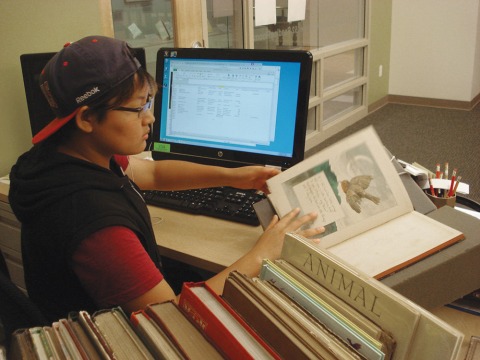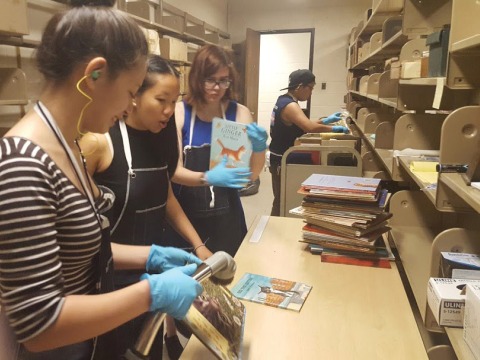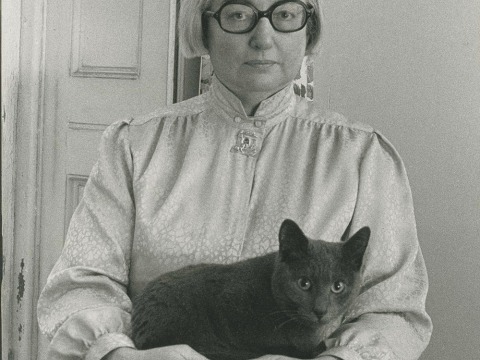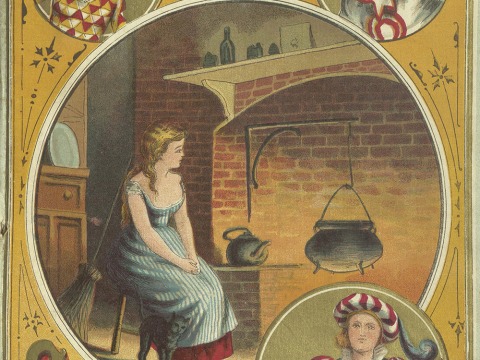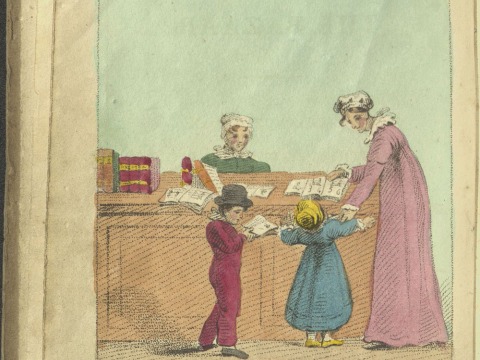
A Book of Her Own
The Girl’s Own Book: Selections from the Ellery Yale Wood Collection will run through Dec. 18, 2020.
Once the College reopens, this exhibition will give the wider campus community a chance to see nearly 100 of the children’s and young adult books that have been delighting students in classes working in Special Collections since this 12,000-book collection arrived in 2016.
Organizing The Girl’s Own Book exhibition offered a good opportunity to go behind the scenes to look at how important teaching and research collections like this are acquired, organized, and catalogued; the multiple ways in which students are engaged in this work; the important roles of alumnae/i and donors; and the resources of time, energy, and expertise that acquiring collections like this demands.
THE BOOK COLLECTOR
In the early 1960s, Ellery Yale Wood ’52 moved to London, got a job at a rare book store, and began buying 18th- and 19th-century books written for children and young women readers. Fifty years and thousands of books later, she decided that it was time to find a home for her books. In the summer of 2012, she asked London rare book dealer Brian Lake of Jarndyce & Co. to contact us to see if we would be interested in the books.
The details were vague about exactly what was in the collection and how large it was, but it sounded too promising not to look at seriously. At the beginning of September, I (Eric Pumroy) went to see the collection in the little town of Wisbech, accompanied by Kate Thomas and Bethany Schneider of the English Department.
Wood’s dilapidated three-story Georgian house turned out to be stuffed with books, ranging from some of the earliest printings of nursery rhymes and children’s stories, to books aimed at young women readers in the 19th and early 20th centuries, to the fairy tales and fantasies of George MacDonald, C. S. Lewis, and J. K. Rowling. Once we saw the books, there was no doubt that this was a great collection for Bryn Mawr, one that would fit very well with the interests of many English majors and that offered an incredible resource to support teaching and research in a field that is becoming increasingly important in literary studies.
Sadly, by the time we arrived in Wisbech, Wood was largely unconscious in a nursing home. When she passed away the following spring, she left her children’s book collection to Bryn Mawr.
BOXES OF BOOKS
Lake arranged for the books to be boxed up and shipped to Bryn Mawr, some 650 boxes in all. During the summer of 2016, a squad of eight students working under the direction of Curator of Rare Books Marianne Hansen unpacked, cleaned, sorted the books and created a spreadsheet listing everything in the collection. While the initial sorting was completed that summer, students continued organizing, inventorying, and removing duplicates for more than another year.
We began publicizing the collection immediately. Several of the students wrote blog entries about books that caught their attention that first summer. (See especially Isabella Nugent ’18 writing about the Golliwog books and Cassidy Gruber Baruth ’19 about Mrs. Molesworth on the Special Collections blog, specialcollections.blogs.brynmawr.edu.) That fall, Hansen curated a small exhibition in the Eva Jane Romaine Coombe Special Collections Suite, and we held a public event introducing the collection in December 2016.
At the same time, the English department was successfully petitioning for a tenure-track position focusing on children’s and young adult literature. Assistant Professor of English Chloe Flower was hired the following year.
BEHIND THE SCENES
Exhibitions, classes, and programs are the exciting and visible things that result from acquiring an important collection, but they depend on being able to find out what is in the collection. Cataloguing is the behind-the-scenes but essential process that turns piles of books into a usable research collection. This collection is particularly challenging. Children’s books were such ephemeral publications that for hundreds of our books, the only known copy in a library is the one at Bryn Mawr, which means that our cataloguers had to create entirely new records. We also found that very few children’s books have been catalogued with subject headings, which meant that even where we could use cataloguing done by other libraries, we needed to add notes about the major themes in the books in order to open up the collection for class and research projects.
Thanks to financial support from the Friends of the Bryn Mawr College Libraries and a large gift from Ellen Michelson, P’09, we have been able to hire professional cataloguers to work full-time on the children’s books since the beginning of 2017. In addition, more than two dozen student workers in Special Collections have put in thousands of hours helping to organize, preserve, and catalogue the books. By the time the project ends in December 2020, it will have taken four years to catalogue the 12,000 books, at a cost of about $300,000.
Acquiring a collection of the scale of Ellery Yale Wood’s children’s books requires a sizeable investment in staff time, storage space, and financial resources. In return, Bryn Mawr is now the holder of one of the country’s major research collections on children’s literature, one that is already attracting scholars to do research. It has also proven its value as a rich resource for teaching and student research. In the past three years, more than 20 courses from seven departments have used the Wood collection for class sessions and in assignments, including last fall’s 360˚ course cluster on children’s books.
KATE THOMAS, K. LAURENCE STAPLETON PROFESSOR OF ENGLISH
“I’ve heard some people say that children’s literature is not serious or adult enough to be worthy of study. This is a terrible misunderstanding of the intellectual work of being a child, of the importance of imagination to the intellect, of the centrality of the stories we hear as children to the way we understand the world as adults. The study of children’s literature is one of the most vibrant areas in literary study today precisely because the stories we tell children are central to the way that culture develops and proceeds for adults.”
— from her remarks at the program celebrating the arrival of the Ellery Yale Wood '52 Collection, December 5, 2016.
Published on: 05/27/2020
